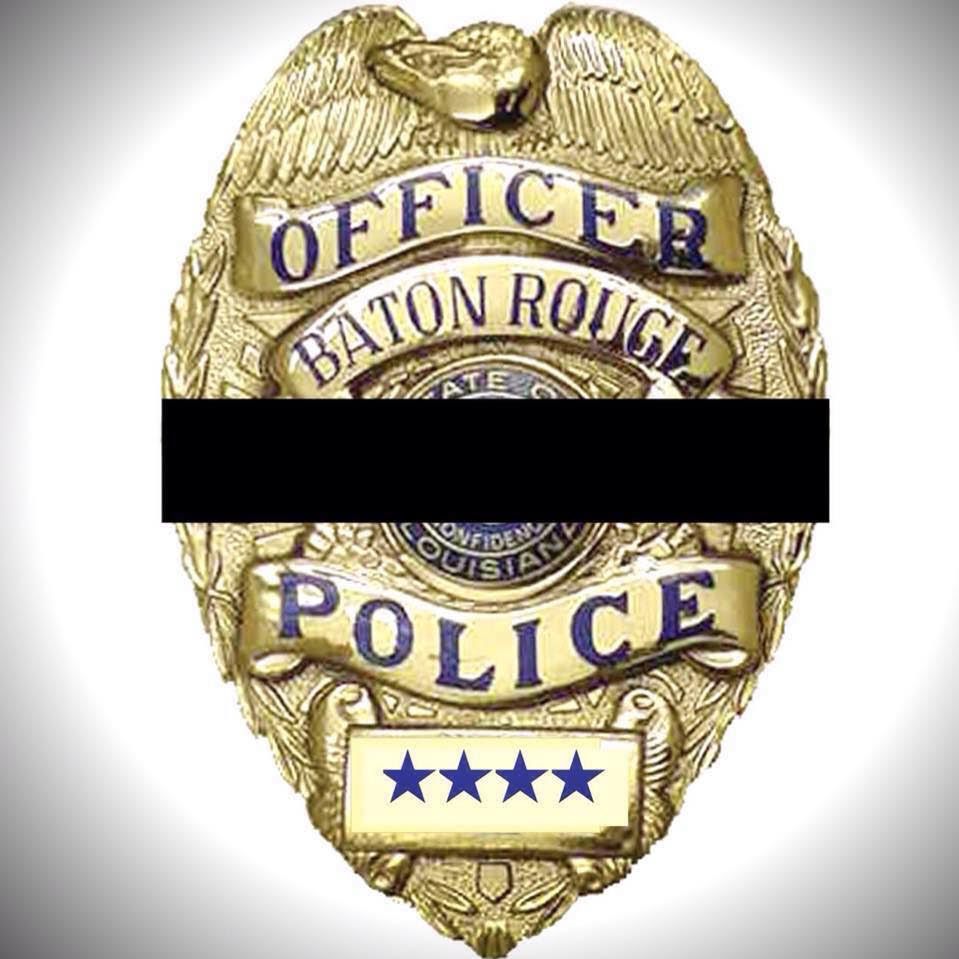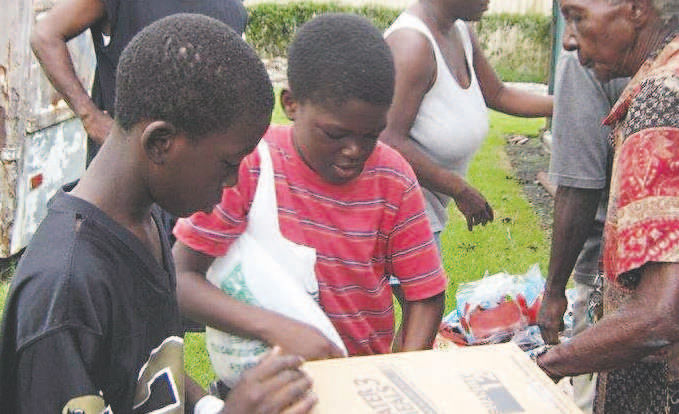
Baton Rouge slayings hit Lafourche, Terrebonne hard
July 18, 2016
READY TO REBOUND
July 19, 2016The death last week of a Houma teen, allegedly at the hands of his 16-year-old cousin and their 14-year-old friend, drives home a painful awareness for local community leaders. They acknowledge that a subculture which glorifies urban street violence continues to have a local stronghold, threatening to swallow a generation of young black men and others to come.
The body of Roderick “R.J.” Davis, pierced by multiple gunshot wounds, was found at around 5 a.m. July 11, on the well-tended grass of Scott Lane Park, a multi-purpose field in central Houma used for sports leagues and children’s Easter egg hunts. The
shooting, city police determined, occurred around 11:15 p.m. the night before, when they responded to reports of shots fired in the vicinity.
No guns were found, but a small quantity of illegal drugs was recovered.
Within 24 hours, police had three teens in custody. One, a 16-year-old who lives on Westside Boulevard, was released within a day due to lack of evidence, law enforcement sources said. The victim’s next-door neighbor and cousin, Denzel Brown, 16, remains in custody and will likely be prosecuted as an adult. He is currently held in a special juvenile cell at the Terrebonne Parish jail. Zamante “Shank”
Alvis, 14, of St. Louis Street, is being held at the Terrebonne Parish Juvenile Detention Center. Authorities want him prosecuted as an adult as well. A grand jury will determine whether one or both will be charged with 2nd degree murder. The investigation is not complete, and while there is currently no evidence to warrant holding of the unidentified 16-year-old, charges are still a possibility.
At a memorial for the slain teen at the park last week, friends and relatives gathered, offering prayers amid wails and tears. Some left candles at the site, and they spoke of how RJ would be missed.
“YOU CAN FIND YOURSELF DEAD”
Tears were shed as well for the community itself, and the impact of a life lost and others ruined, as some who were present used the gathering to share a message that violence must end.
“The black-on-black crime has to stop,” said 19-year-old Rashawn Brown, brother of Denzel Brown and also a cousin to RJ Davis. “Stop carrying guns and stop playing with them or you will end up in a place where you don’t want to be … You can find yourself dead or in trouble or in jail.”
Another cousin, 19-year-old Jamonta Brown, voiced a similar lament.
“All of us black people should get along and stop running in the streets,” said Jamonta. “We need to stop killing each other. We need to do like we used to do when we were small, come to the park, play ball, get along.”
Their message is one community leaders have long wished to see adopted by local youth, but they acknowledge an uphill battle. Gun violence in the Bayou Region is nothing new, and it is not limited to black victims or perpetrators. But this particular brand of intra-racial mayhem is at the moment most sorely felt in neighborhoods like this one, a lower middle class enclave of wood-framed houses and bike-riding children.
Jerome Boykin, president of the Terrebonne Parish NAACP, grew up in the neighborhood and says denial of the problem costs lives and must cease.
“It is part of the culture, part of the young generation that is making it happen,” Boykin said. “There is no excuse for it. There is no excuse for black on black crime. We cannot blame the white man. We do have to involve our leaders and ministers and others in the community, to try and talk to our youth if they are not on the right path and encourage kids to stay in school. We have put the KKK out of business. We are responsible for more black deaths here than they were.”
HAUNTING VIDEO
It is believed that the death of Roderick “RJ” Davis may have been the result of a dispute, related to allegations that he stole a firearm from one of the other teens, but the facts are still under investigation.
Interviews with friends and relatives of Davis and those accused paint a chilling picture of teens for whom possession of a pistol is a rite of passage conferring manhood, and who have little attachment to positive and traditional goals and ambitions.
A music video called “Dream,” shot in the same neighborhood by a young producer from Thibodaux, made social media rounds in the days after RJ’s killing.
In a chilling blend of cinema verite and apparent prophecy, a teen identified by friends as “Shank” Alvis appears to be among those waving around a semi-automatic handgun and an assault rifle. It is not known whether the guns are real or replicas. The Times made its inquiries about its origin and the full version of the video can be seen at HoumaTimes.com. Gunplay, dancing and faux violence — including a simulated drive-by shooting — are accompanied by a hypnotic beat to which a young man chants and raps about the Oct. 8 shooting death of 18-year-old Corey “Bugg Petty” Butler.
“He got shot up in the Yee, he’ll never see his baby,” the lyrics state, Yee being a reference to Morgan Street, and also incorporated into the group name chosen by a loose-knit crew of local young criminals, who refer to themselves as “Yeeway.” They also use “Yeeway” as a social media hashtag. “I did it on my own, nobody showed me the ropes … I remember no food in the kitchen.”
While the video expresses sadness for the death of “Bugg,” it offers no redemption, just tacit, almost playful acceptance of the way things are.
Houma detectives have seen the video and are aware of it and other expressions of the societal street norm in central Houma.
The youngsters accused of involvement in the killing of RJ are seen by the police and others in the neighborhood as low-rent versions of “Yeeway,” referring to themselves as “Oneway,” also used as a social media hashtag.
CONFLICTING STORIES
Video from neighborhood surveillance cameras has been helpful, law enforcement sources acknowledge, as have witness statements. The Times has conducted interviews in the neighborhood to determine some of what the police have learned, but conflicting stories and statements emerge.
For the immediate family of RJ Davis, the pain of loss is great, but they have declined to discuss his life or his death.
The RJ they remember appears on a local newspaper page from 2009, handing out hurricane supplies as part of an NAACP relief effort, with his cousin Jamonta.
That Davis had a history of conduct problems is well known in circles of educators and justice professionals, who spoke of time spent in state juvenile custody.
Such background, however, is not known to include crimes involving drugs or violence against others. His cousin, Jamonta, has described him as a “protector,” and questions claims that RJ was a creature of Houma’s street culture. Another family member recalls him as always respectful toward elders.
But there is also evidence of conflict. Neighbors say that the night before he was killed, RJ was engaged in a dispute with Shank and another youth, who allegedly claimed he had stolen a gun from one of them.
RJ’s aunt, Schenika Brown, is among alleged witnesses to the Saturday exchange.
One youth was across Stovall Street from her home, Schenika said, in the parking lot of a convenience store, “hollering across the street at RJ.”
Shank was on the side of Stovall Street where the Brown residence is located,
This 2009 photo shows Roderick Davis at the age of 10 with his cousin, Jamonta, then 11, helping their late grandmother load food and water distributed by the NAACP after Hurricane Gustav. Roderick Davis was killed by gunfire last week.











